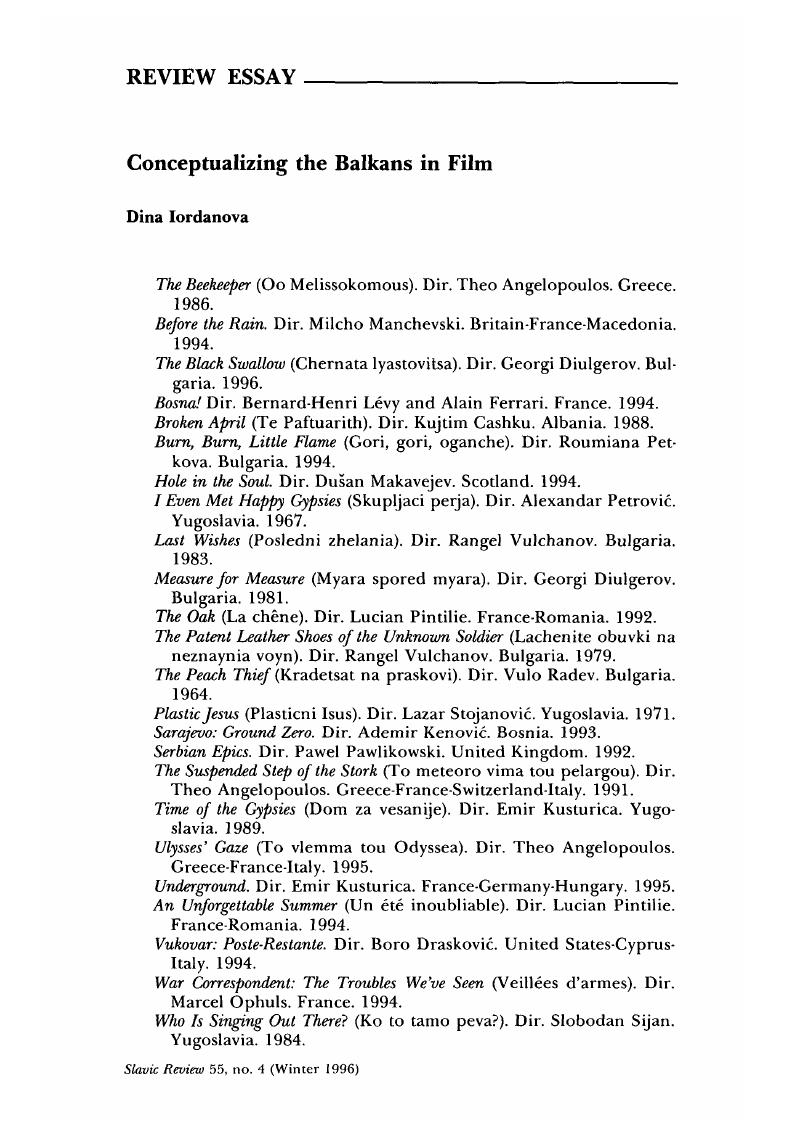Article contents
Conceptualizing the Balkans in Film
Published online by Cambridge University Press: 27 January 2017
Abstract

- Type
- Review Essay
- Information
- Copyright
- Copyright © Association for Slavic, East European, and Eurasian Studies. 1996
References
1. Misha, Glenny, The Fall of Yugoslavia: The Third Balkan War (London, 1992), 99.Google Scholar
2. Ian, Ang, “Hegemony in Trouble: Nostalgia and the Ideology of the Impossible in European Cinema,” in Petrie, Duncan, ed., Screening Europe: Image and Identity in Contemporary European Cinema (London, 1992), 28.Google Scholar
3. Andrew Meier, “In Sarajevo, a Video View Taped from Ground Zero,” New York Times, 23 May 1993, 2–20.
4. Milcho, Manchevski, “Predi dazhda” (interview), Kino (Sofia) 2 (1995): 46 Google Scholar.
5. Noel Taylor, “Film-Maker's Macabre Comment on 1988 Romania Has a Lot to Weep Over,” Ottawa Citizen, 15 October 1993, F-3.
6. Annette Insdorf, “A Romanian Director Tells a Tale of Ethnic Madness,” New York Times, 6 November 1994, 2–22.
- 7
- Cited by




